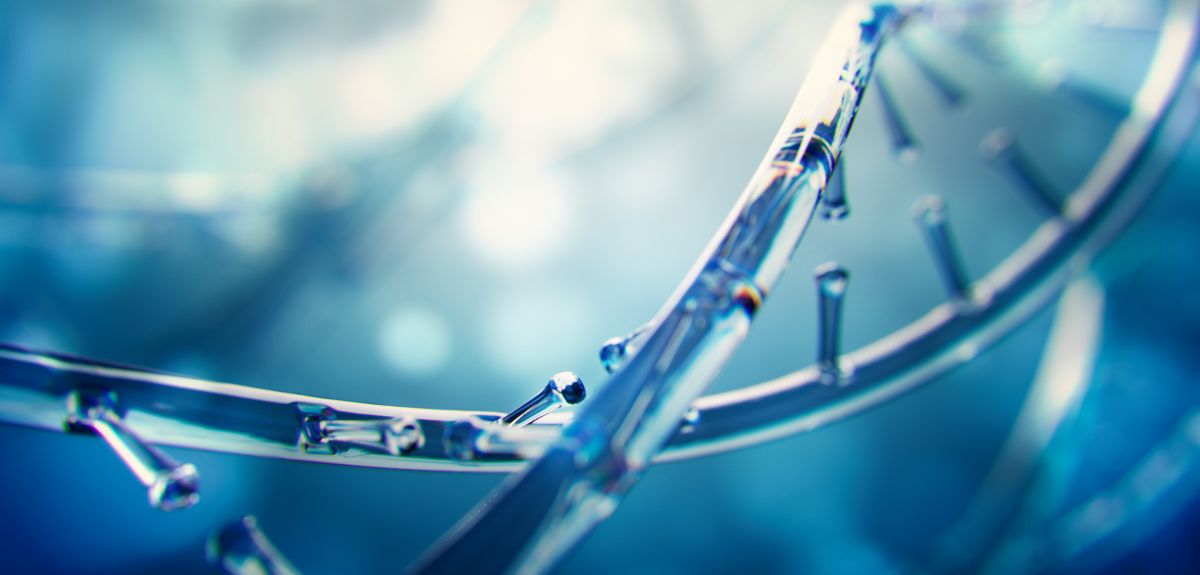
The origin of the first genomes
Understanding when and how genes first came together to form genomes is a fundamental puzzle in the study of the origin of life. Genes are naturally selfish, and yet, life started with cooperation between genes. So, why did these first living molecules sacrifice their selfish interests to form genomes?
Sam Levin, a DPhil student in Oxford’s Department of Zoology, discusses his new study: 'The evolution of cooperation in simple molecular replicators’, written in collaboration with Professor Stuart West, which addresses this very question.
Contemporary life forms, from bacteria to bonobos, are made up of genomes. A genome is a collection of replicating units, or genes, which specialise on different aspects of making an organism. Some genes focus on making an eyeball, and others on producing a lung. We don’t think of these genes as individuals in their own right - they are simply parts of the larger whole - the organism.
The origin of the first genomes billions of years ago required gene cooperation, but life itself started with simple, independent genes, or replicators. These replicators were ‘naked molecules’, which were capable of little more than making copies of themselves. Early replicators were individuals in their own right. They competed, with replicators that were better at making copies of themselves, out-competing those that were less fit.
At some point, before the last common ancestor of all living things, independent replicating molecules - naked genes, had to come together to form the first genomes. In the process, they subjugated sacrificed their own interests (reducing their own replication rates, helping copy other replicators) to become part of the larger whole, or genome.
In our paper, published in Proceedings of the Royal Society B, we use mathematical models to show why these primitive life forms might have cooperated, and reveal the link between their behaviour and that of birds, bees, microbes and humans.
Offspring copies sticking around and parent copies surviving both increase ‘relatedness’ between replicators (sharing the same genetic sequence). This shows that the forces that favour cooperation are the same across the tree of life.
The puzzle of cooperation
Darwin (1859) showed us that, all else being equal, we expect selfish individuals to outcompete cooperative ones. Imagine a soup of replicators in the primordial sea, where replicators act cooperatively (reducing their own replication rate) to help copy others. Suppose a mutant arises, which, rather than help others, selfishly copies itself. This mutant reaps the benefits of others being cooperative, but doesn’t incur any cost of helping others. This mutant will outcompete the rest, sweep through the population, and cooperation will disappear. What, then, could explain the continued cooperation between replicators?
We used simple mathematical models of evolution to analyse this question. Previous work by Paul Higgs and colleagues using simulations suggested that replicator cooperation could be explained by replicator copies staying nearby to each other (limited diffusion). When this happens, because copies are essentially clones of their parents, cooperators find themselves near other cooperators, and selfish molecules find themselves near other selfish molecules. Cooperators reap the benefits of cooperation, and selfish molecules have no one to exploit. Soon there are only cooperative molecules and no selfish ones.
Instead of using complex computer simulations, we used simple, pen and paper mathematical models. We found several results. First, when replicator copies stay near each other, this always leads to cooperation. Although it leads to cooperators helping other cooperators, it also leads to cooperators competing with other cooperators, instead of competing with selfish individuals. We found that these two effects exactly cancelled each other out. Instead, an additional biological feature of replicators is necessary for cooperation to evolve: the survival of replicators after they copy themselves (overlapping generations). This also leads to like-individuals being together, but it reduces the negative impact of competition. We showed that the survival of copies after reproduction and offspring copies remaining nearby, are both necessary to favour cooperation at the start of life.
A common thread in the tree of life
Surprisingly, the simple models that we used are the same as those used to understand cooperation across the tree of life, from bacteria to humans. Cooperation didn’t just happen in replicators, it’s everywhere in nature, from cooperatively breeding birds to complex ant colonies. The problem of cooperation in higher organisms has long been understood using the theory of kin selection, developed by Bill Hamilton in 1964 and popularised by Richard Dawkins in The Selfish Gene. Organisms cooperate due to shared genes. A bird can get copies of its genes into the next generation by reproducing itself, or by helping a relative, who shares genes, to reproduce. In other words, genes acting selfishly (getting copies of themselves to the next generation) leads to organisms appearing cooperative. Relatedness (shared genes) favours cooperation.
Our work shows that the same kin selection approach used in birds and bees can be used to understand the first replicators. Offspring copies sticking around and parent copies surviving both increase ‘relatedness’ between replicators (sharing the same genetic sequence). This shows that the forces that favour cooperation are the same across the tree of life, from early human societies to the origin of life.